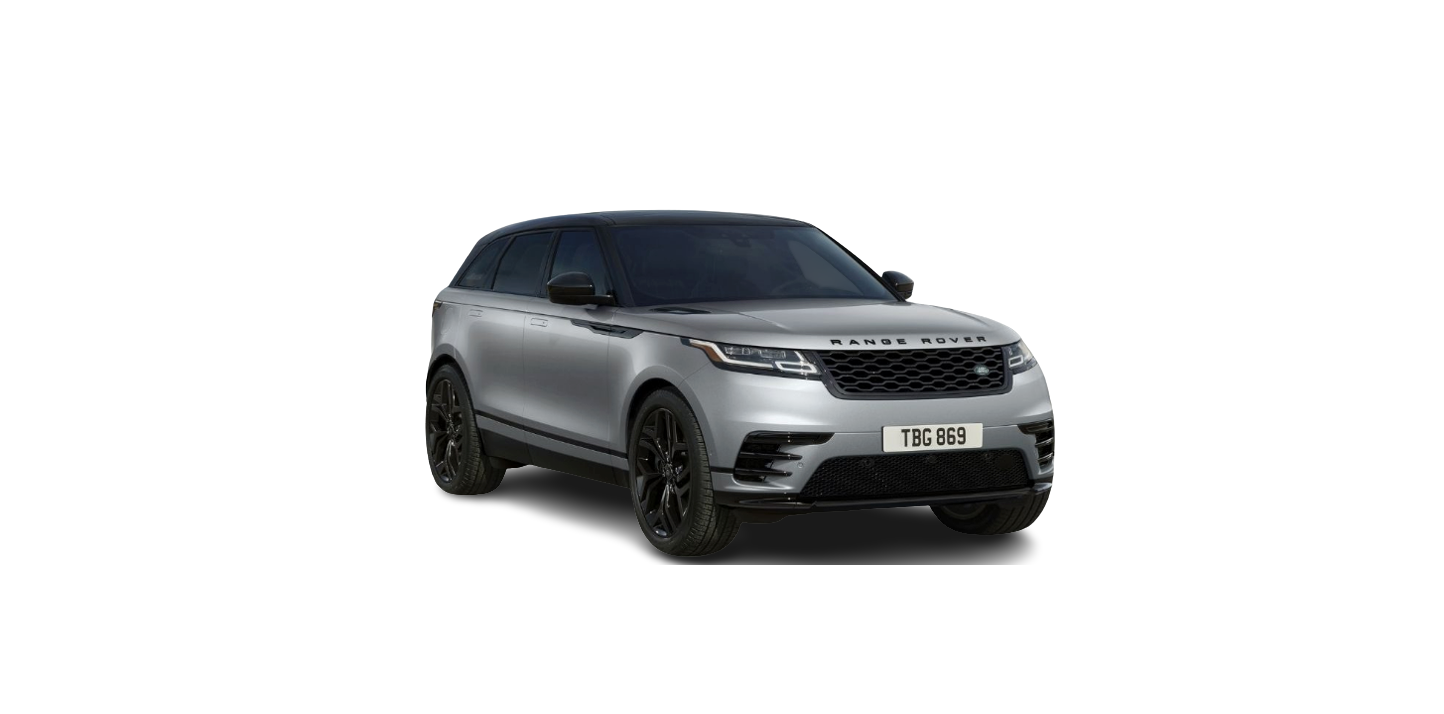2023 Land Rover RANGE ROVER VELAR VEHICLE RECOVERY Owner Manual




2023 Land Rover RANGE ROVER VELAR VEHICLE RECOVERY


RECOVERY METHOD
The recommended method for recovery or transportation of the vehicle is on a transporter or trailer designed for that purpose.
- Make sure that vehicle recovery or transportation is carried out by suitably qualified personnel and the vehicle is secured correctly.
- The recovery agent must activate the transmission park release before recovery commences. The procedure is covered in a separate publication for service personnel. Failure to activate the transmission park release can result in serious transmission damage.
- Make sure that the steering column is unlocked during vehicle recovery. The smart key must remain inside the vehicle and the ignition must be switched on.
- The vehicle should not be towed on all four wheels and should not be recovered with the front or rear wheels suspended. Doing so can result in serious transmission damage.
If the vehicle’s battery is to be disconnected, the steering column must be unlocked first. The steering column cannot be unlocked with the battery disconnected.
FRONT TOWING EYE
Use extreme caution when moving or towing the vehicle. Death or serious injury may occur.
Use extreme caution when detaching towing equipment. Vehicle movement is possible which can result in serious injury.
The front towing point is located behind a removable cover in the lower front bumper.
To remove the cover:
- Rotate each of the fasteners 90 degrees counter-clockwise with a coin, or a similar object, to release the lower edge of the cover.
- Pull the cover forward from the rear lower edge to release the lugs on the top edge of the cover.
To refit the cover:
- Offer up the cover and make sure the lugs at the top edge engage with the holes in the body panel.
- Rotate each of the fasteners 90 degrees clockwise to secure the cover in position.
To remove the cover:
- Remove the four screws to release the lower edge of the cover.
- Pull the cover forward from the rear lower edge to release the upper and lower lugs.
To refit the cover:
- Offer up the cover and make sure the lugs at the upper and lower edges engage with the holes in the body panel.
- Tighten the four screws to secure the cover in position.
REAR TOWING EYE
Use extreme caution when moving or towing the vehicle. Death or serious injury may occur.
All vehicles except 5.0L gasoline
5.0L gasoline
The rear towing eye is located under the loadspace floor panel.
The rear towing point is located behind a small access panel in the rear bumper.
To fit the towing eye:
- 5.0L gasoline: Press the upper edge of the rear bumper’s access panel and carefully release the lower edge. Remove the cover.All vehicles except 5.0L gasoline: Press the lower edge of the rear bumper’s access panel to release the securing clip. Remove the cover. NOTES
Note the orientation of the access cover to aid refitting. - Locate the towing point through the rear bumper and fully screw the towing eye counter-clockwise into the towing point, until secure. NOTES
Pass the vehicle’s wheel brace through the towing eye, to act as a lever to help rotate the towing eye until it is completely tight.
To refit the access panel, align the lug into the recess in the bumper and then lightly press the opposite edge to engage the retaining clip.
All vehicles except 5.0L gasoline
The rear towing eye for vehicles with a tow bar is located behind a removable cover in the lower rear bumper.
To remove the cover:
- Rotate both fasteners 90 degrees counter-clockwise with a coin, or a similar object, to release the lower edge of the cover.
- Pull the cover forward from the rear lower edge to release the lugs on the top edge of the cover.
To refit the cover:
- Offer up the cover and make sure the lugs at the top edge engage with the holes in the body panel.
- Rotate each of the fasteners 90 degrees clockwise to secure the cover in position.
5.0L gasoline
The rear towing eye for vehicles with a tow bar is located behind a removable cover in the lower rear bumper.
To remove the cover:
- Rotate the three fasteners 90 degrees counter-clockwise with a coin, or a similar object, to release the lower edge of the cover.
- Pull the cover forward from the rear lower edge to release the lugs on the top edge of the cover.
To refit the cover:
- Offer up the cover and make sure the lugs at the top edge engage with the holes in the body panel.
- Rotate the three fasteners 90 degrees clockwise to secure the cover in position.
OFF-ROAD RECOVERY
If the towing points are to be used for off-road recovery, it is essential that off-road driver training, covering recovery techniques is undertaken.
Further information on off-road driver training can be found at: www.landroverexperience.com.
TRANSMISSION PARK RELEASE
Make sure the following warnings and cautions have been read and fully understood before carrying out the transmission park release. Failure to follow the guidance given could lead to serious injury, death, or vehicle damage.
Before attempting the transmission park release procedure, make sure that the vehicle is secured with wheel chocks and apply the Electric Parking Brake (EPB). Failure to secure the vehicle can result in unexpected movement of the vehicle, which could result in personal injury.
It is recommended that the following procedure is carried out only by qualified personnel. If in any doubt about carrying out the instructions, or if the warnings in this section cannot be complied with, seek qualified assistance. Failure to carry out the procedure as described could result in injury or death.
The transmission must be removed from Park (P) before recovering the vehicle. Failure to follow the transmission park release procedure can result in serious transmission damage.
The transmission park release procedure locks the transmission in Neutral (N) and prevents the transmission from automatically selecting Park (P).
The following conditions must be satisfied before the transmission park release procedure will function. If any of these conditions are not met, the transmission park release procedure will not work.
- The vehicle must be stationary.
- The EPB must be applied.
- The vehicle battery must be sufficiently charged.
- The engine cranks but fails to start.
To release the park mechanism, follow this procedure:
- Apply the EPB. See ELECTRIC PARKING BRAKE (EPB).
- Press the Start button. Do not press the brake pedal when pressing the Start button at this stage.
- Press and hold the brake pedal with your left foot during the next stages of the process.
- Press and hold the accelerator fully for one second, then release fully.
- Press and hold the accelerator fully for four seconds then release fully. Depending on vehicle specification, the instrument panel may display a message to confirm the gearbox is in service mode.
- Press the Start button to release from Park (P). The gear selector displays a flashing (P).
- The engine will attempt to start several times.
- Wait for the engine to complete the attempts to start, which can take up to 30 seconds.
- Move the gear selector to the Neutral (N) position. The instrument panel and gear selector displays (N). See AUTOMATIC TRANSMISSION.
- Release the brake pedal.
The vehicle can be towed once the EPB has been released as result of the above procedure. See ELECTRIC PARKING BRAKE (EPB).
The EPB may remain applied due to a critical system failure. Towing the vehicle with the EPB applied may result in damage to the vehicle’s tires.
If the vehicle remains stationary for longer than 10 minutes the system automatically re-engages Park ‘P’ gear to prevent battery drainage.
Recent Posts
VW Jetta Engine Fuse Box Diagram
Access the comprehensive 2010-2018 VW Jetta Passenger Fuse Box Diagram to troubleshoot electrical issues effectively.…
VW Jetta Passenger Fuse Box Diagram
Explore the comprehensive VW Jetta Passenger Fuse Box Diagram to troubleshoot electrical issues effectively. Understand…
2023 Ford F-150 Lightning Fuse Box Diagram
Under Hood Fuse Box Location Remove the front luggage compartment cover. Under Hood Fuse Box…
2022 Kawasaki NINJA H2 SX SE Brake Lever Adjuster Owner’s Manual
2022 Kawasaki NINJA H2 SX SE Brake Lever Adjuster Owner's Manual NOTICE Only adjust the front…
2023 Land Rover Range Rover Evoque Exiting The Vehicle Owners Manual
2023 Land Rover Range Rover Evoque Exiting The Vehicle SINGLE LOCKING WARNING Before exiting the…
2023 Land Rover Range Rover Evoque Front Seats Owners Manual
2023 Land Rover Range Rover Evoque Front Seats FRONT SEAT SAFETY Make sure to read…
